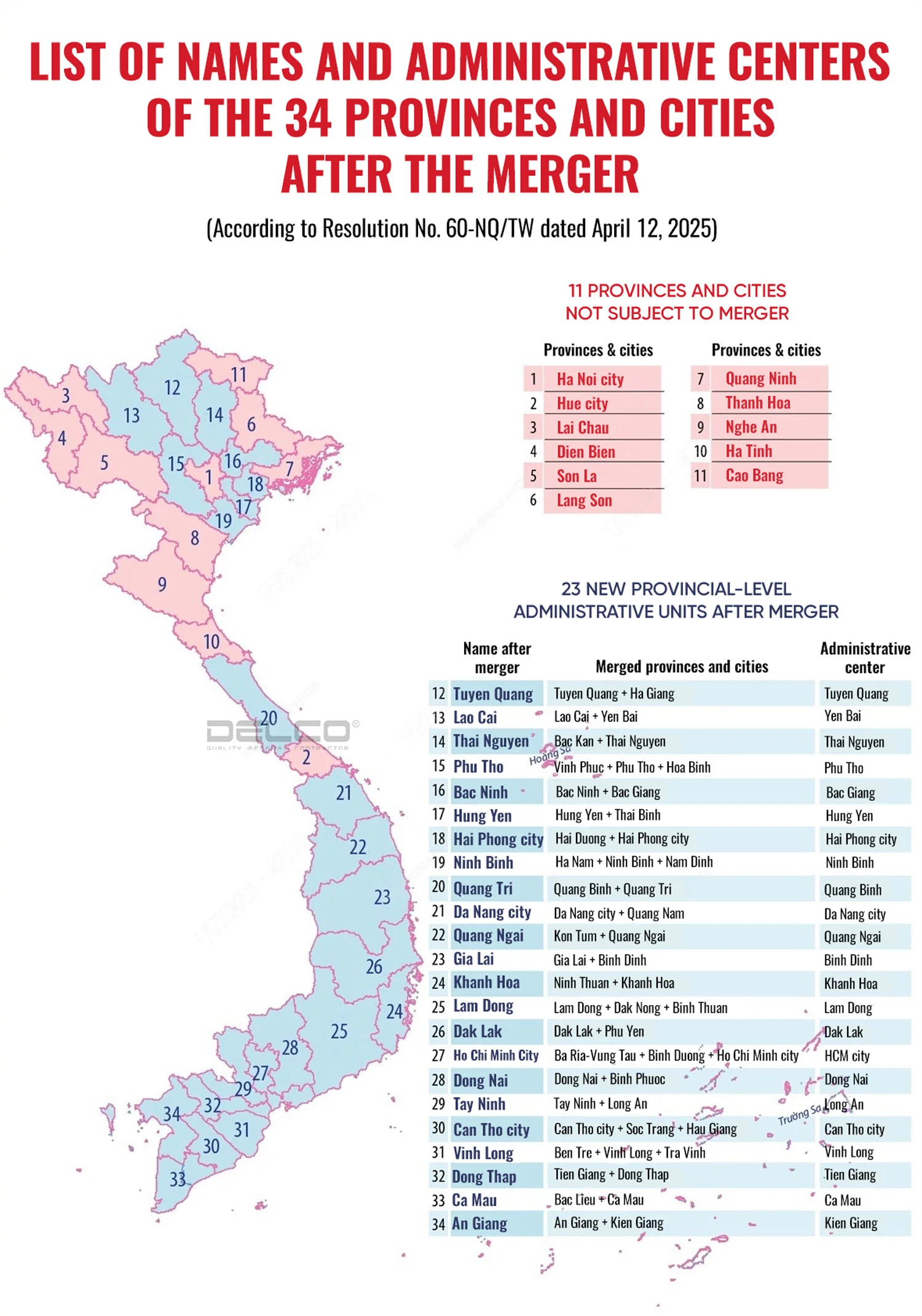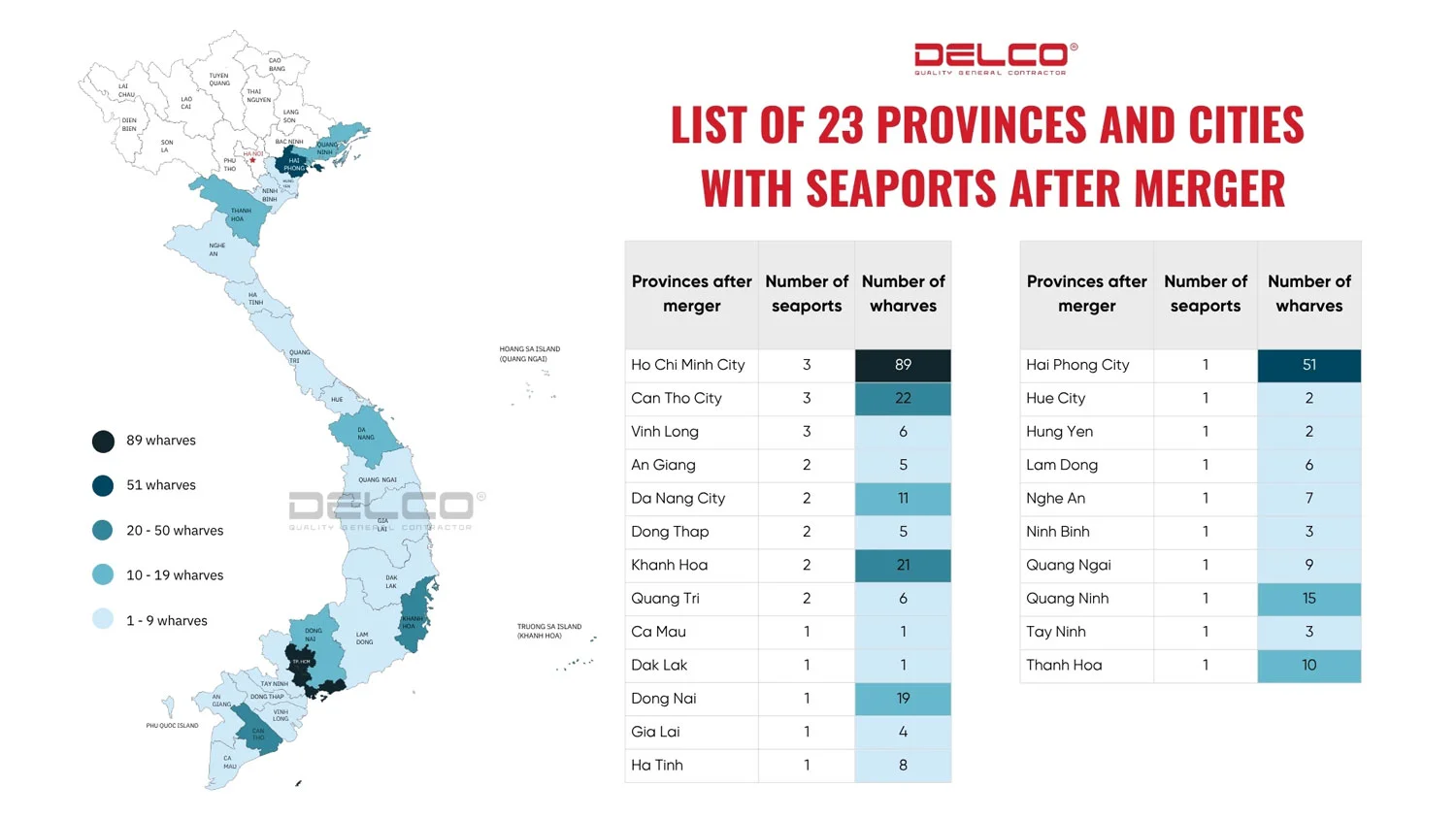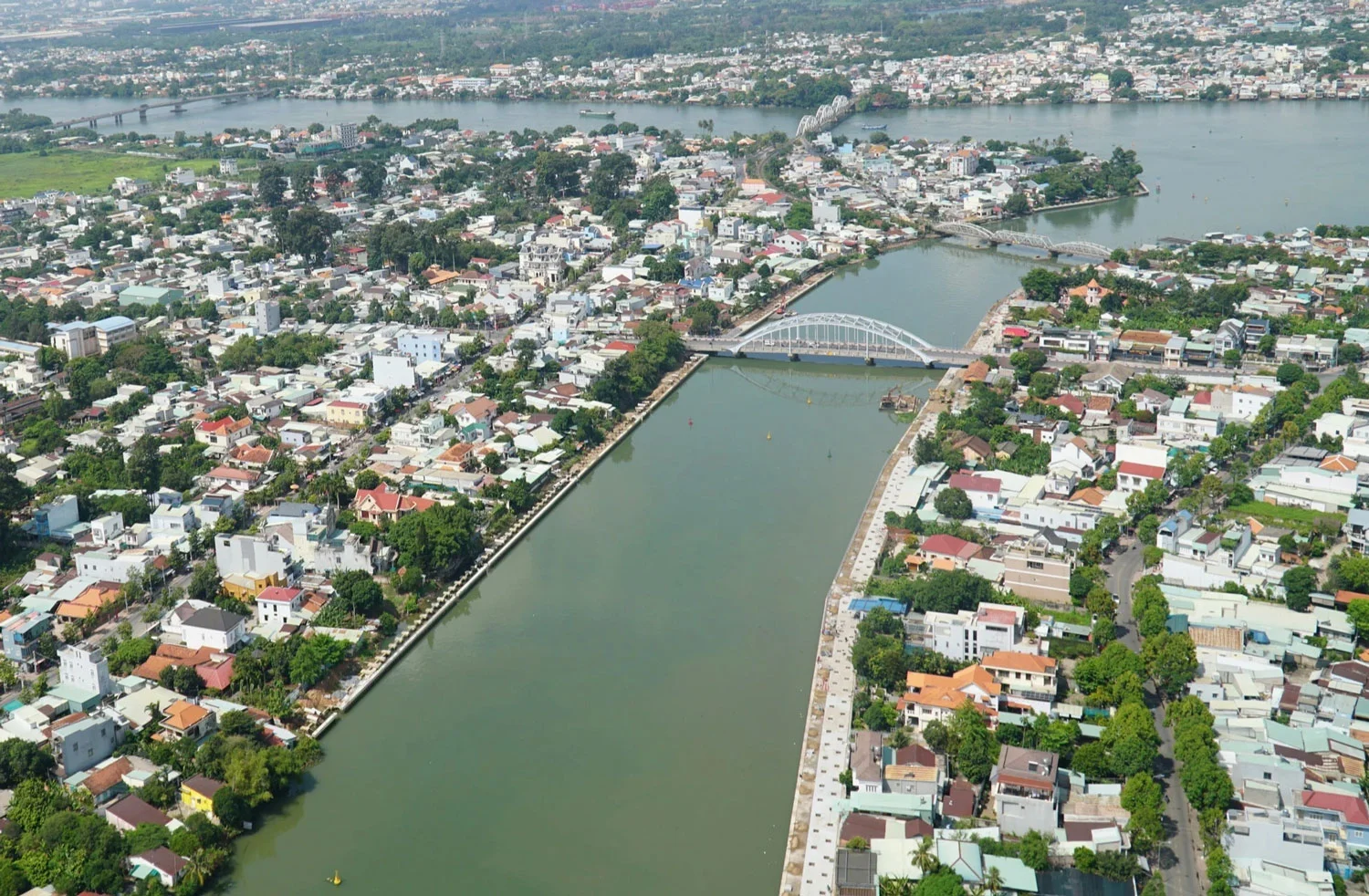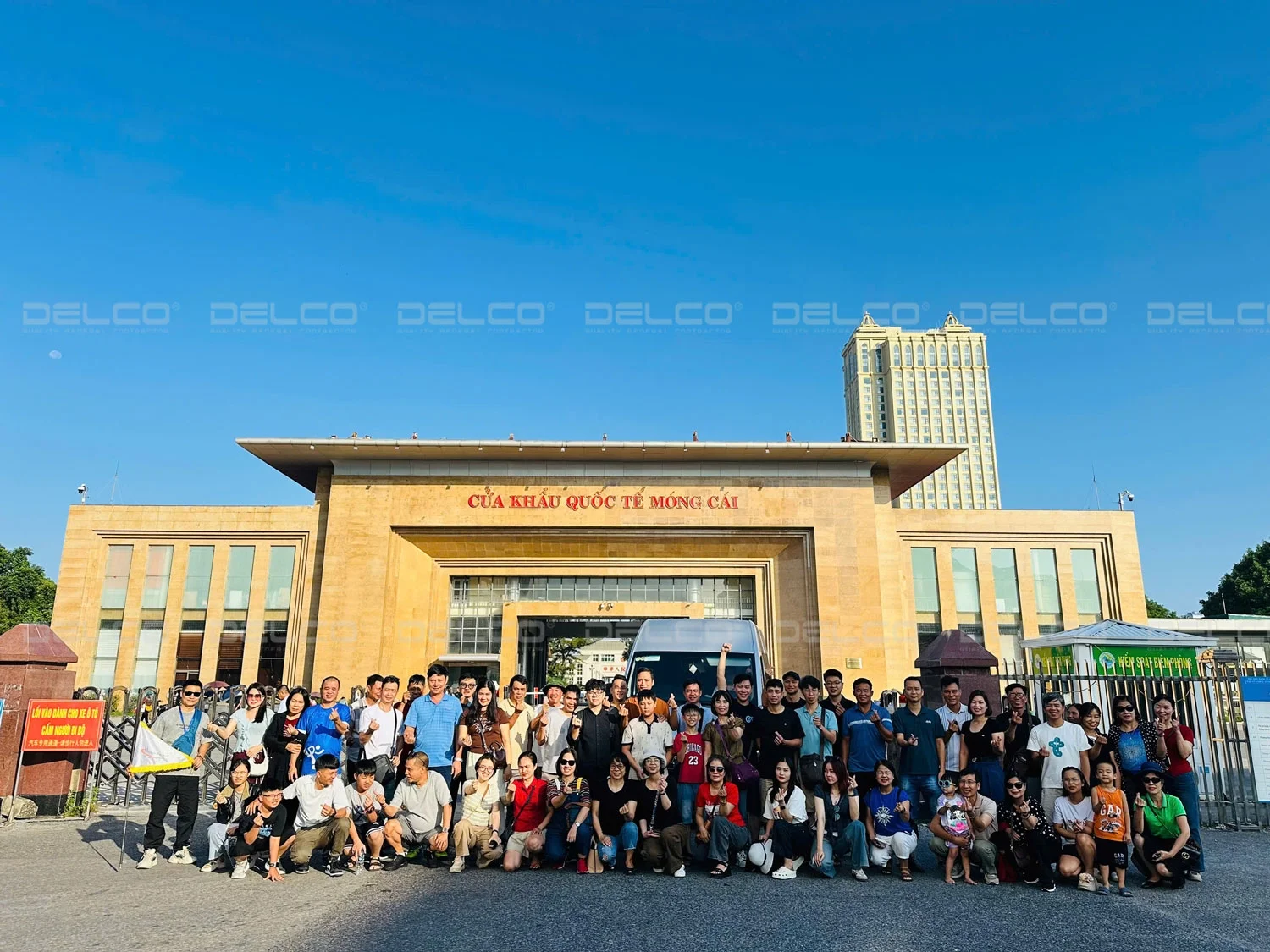Vietnam has undergone an unprecedented administrative reform by reducing the number of provinces and cities from 63 to 34, aiming to create a leaner and more efficient governmental structure.

Change in governance model – enhancing administrative effectiveness
Starting from July 1, 2025, Vietnam officially implemented a new administrative model, cutting the number of centrally governed provinces and cities from 63 to 34. Along with the mergers, the country also carried out a significant downsizing of public employees, consolidated departments and agencies, and eliminated the district level – a former intermediary administrative tier.
Accordingly, the local government system now functions under a two-tier model:
- Provincial level, which includes provinces and centrally governed cities, is responsible for executing national policies and developing local policies tailored to regional conditions.
- Communal level, which covers communes and wards on the mainland and special zones on islands, is granted more authority in handling public services and issuing regulations suited to local contexts, under the supervision of the provincial level.
This reform simplifies the administrative system, removes intermediate layers, shortens administrative procedures, and increases flexibility in governance.
Impact on the seaport system – strengthening logistics and export advantages

List of 23 provinces and cities with seaports in Vietnam after the merger
(Source: Decision No. 804/TTg on the list of seaports and Decision No. 318/BXD on the list of port terminals)
The provincial merger has significantly changed Vietnam’s seaport system. After the reorganization, 21 out of 34 provinces and cities now have a coastline, increasing the percentage of coastal provinces from 54% to 67%. Some inland provinces have been expanded to include coastal areas, creating new opportunities to develop seaport infrastructure and logistics services. Among them, the new Ho Chi Minh City (formed by merging HCMC, Binh Duong, and Ba Ria – Vung Tau) stands out with the largest deep-water seaport system in the country, accounting for nearly one-third of Vietnam’s total port terminals – 2.5 times more than before the merger. With seaports now more evenly distributed across regions, businesses have better access to export infrastructure, can connect more easily to international shipping routes, lower logistics costs, and shorten export times.

Image: Gemalink deep-water port (new HCMC), one of the region’s largest deep-water ports, capable of handling vessels up to 250,000 DWT
Change in Vietnam’s investment map
The provincial merger is not just an administrative change – it is also transforming Vietnam’s industrial investment landscape. Many of the newly merged provinces are now larger in scale, better connected by infrastructure, and have more potential for industrial growth.

(Image: A view of Dong Nai province)
For instance, the merger of Dong Nai – a major industrial hub, with Binh Phuoc – a province rich in raw materials like cashew, rubber, and pepper, helps create a complete production and processing chain, adding more value and improving investment efficiency.
At the same time, the new provinces now have better conditions to plan economic zones and transport systems in a more coordinated way. Investment incentive policies and regional development strategies can be developed in a unified manner, helping create a more attractive investment environment – especially for high-quality FDI projects.
Source: VNExpress, Vietnam News Agency
See more: Top 5 ideal locations for building factories in Vietnam after July 1st, 2025
See more: New “super industrial capitals” after mergers: Fresh opportunities for FDI investors in Vietna
See more: FDI into Vietnam in the first half of 2025 reaches USD 21.52 billion – Highest level in 15 years






